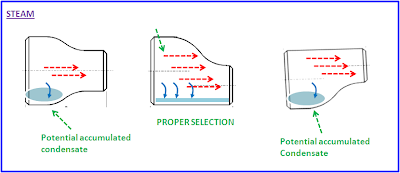1.
Introduction of Process Engineering
1.1
Function of Process Engineering
- Transfer the laboratory and pilot
plant process information
to fulfill the requirement of process
plant mechanical design and instrument and control design
- Major activities include the material
and energy balance, sizing of piping and equipment, setting up the requirement
of instrument and equipment operation condition such as temperature and
pressure.
- Guideline for the plant operation.
1.2
Basic Requirement of a Process Plant
Now, process engineers are always
required to proceed the
design in the consideration of the
following requirement:
-Safety
-Operability
-Maintenance requirement
-Minimum environmental impact
-Energy efficiency
-Economy
1.3
Process engineers’ role
- Collect process information including
licensor list, rule of thumb plant investment cost, pros and cons of each
process to assist the project and sales groups in the pursuit of business.
- Provide technical consultancy to the
client or project for plant operation trouble shooting.
- Assist or be in charge of the plant
start-up and performance test.
- Be capable to do the most of refinery
and some petrochemical process plants Front End Engineering Design (FEED)
2. Major
Activities of Process Engineering
Basically the process engineering
activities are classified into
different areas as listed:
- Feasibility study
- Process design
- System design
- Utility system design
- Plant start up assistance
3.
Design Procedure
3.1
Design Work Flow
If the client has already purchased a
commercial process license, in most case, the licensor will perform the process
design and supplies a PDP (Process design package). In the PDP, at least the
PFD, material and energy balance, critical equipment data sheet, and operation
procedure should be provided. The process engineers will follow the client
specification to complete the process design including the issue or
modification of P&ID and other design such as the preparation of equipment
data sheets, hydraulic checks, line sizing/list, instrument process data
sheets, operation manual, and others.
3.2
Content of Process Design Package
Typical process design package(PDP) will
include the following data:
- Introduction
- Design basis
- Process description
- Material and energy balance
- Chemical and utility consumption
- Piping and material specification
- PFD
- P&ID
- Equipment list
- Equipment process data
sheet/specification
- Instrument process data
sheet/specification
- Reference plot plant
- Effluent data
- Operation procedure
- Key control philosophy in some PDP
4.
Feasibility Study
4.1
Major Scope of Feasibility Study
Feasibility study is the first step in
the evaluation of the plant investment. It will provide the technical and
economical information to assist in the decision making of the investment
including some or all of license selection, plant scale, plant site selection,
and others. For some of the activities such as market survey and others,
process engineers may need
assistance from outside source or other
discipline to complete the study.
- Market survey
- Process survey
- Plant site selection
- Capital investment cost estimation
- Operation cost estimation
- Economic analysis
- Sensitivity analysis
4.2
Data Required for Feasibility Study
- Market information such as raw
material, product, catalyst, and chemical availability, cost, growth rate…
- Process data such as equipment list
and data sheet
- Plant site data such as climate,
transportation, and other
infrastructure availability and cost
- Utility including fuel, electricity,
water, and other utility
availability and cost
- Labor cost
- Local code and regulation
- Tax information
5.
Design Basis
The design basis should include at least
the following information:
a. Site conditions (site elevation,
temperature, humidity and etc.)
b. Battery limit condition (Temperature
/pressure of the process and utility fluid.)
c. Code and regulation in:
- Safety
- Environmental protection
- Specific equipment codes and standard
such as boiler, pressure vessel, heat exchanger, pumps and etc.
d. Project specific requirement such as
- Spare philosophy
- Over design and turn down requirement
- Equipment, piping and instrument
specific requirement such as type, design conditions, and etc.
6. Process
Engineering Design
6.1
Process Design
a. Process simulation
b. Material and energizing balance
c. PFD
d. Equipment sizing
- Static equipment: Fired heater, heat
exchanger, tower, drum, silo, tank, filter….
- Rotary machine: pump, compressor,
steam turbine, fan/blower,
conveyor, and agitator….
- Package equipment: Desalter, chilling
water system…
e. Equipment list
6.2
System Design
a. P&ID
b. Utility flow diagram(UFD)
c. Instrument and control process data
d. Line sizing
f. System hydraulic calculation /check
g. Safety relief system
h. HAZOP study
i. Operation manual
6.3
Offsite/Utility System Requirement
6.3.1
Tankage
a. Raw material
b. Final product
c. Intermediate product
d. Off spec. product
e. Utilities
f. Wastewater or other effluent
6.3.2
Utility System
a. Steam/condensate: HP, MP, LP…
b. Water System: raw water, potable
water, cooling water, BFW, Demineralized water, process water, fire water
c. Air: Plant air, instrument air
d.
Fuel: Fuel oil, fuel gas
e. Gas: N2
f. Electricity
7. Assistance
in plant starting
7.1
Typical process plant start up procedures
a. Precommissioning activities
- Piping cleaning: water flushing, air
blowing, steam
blowing, or chemical cleaning
- Tightness test and/or vacuum test
- Refractory and system dry out
- Air removal
- Instrument calibration
- Instrument function test
- Electrical facilities test such as
motor no load running test
- Catalyst/packing loading
b. Equipment test run
c. System test run
d. Other procedure prior to feed-in such
as catalyst conditioning or oil circulation
e. Feed-in
f. Performance test


















